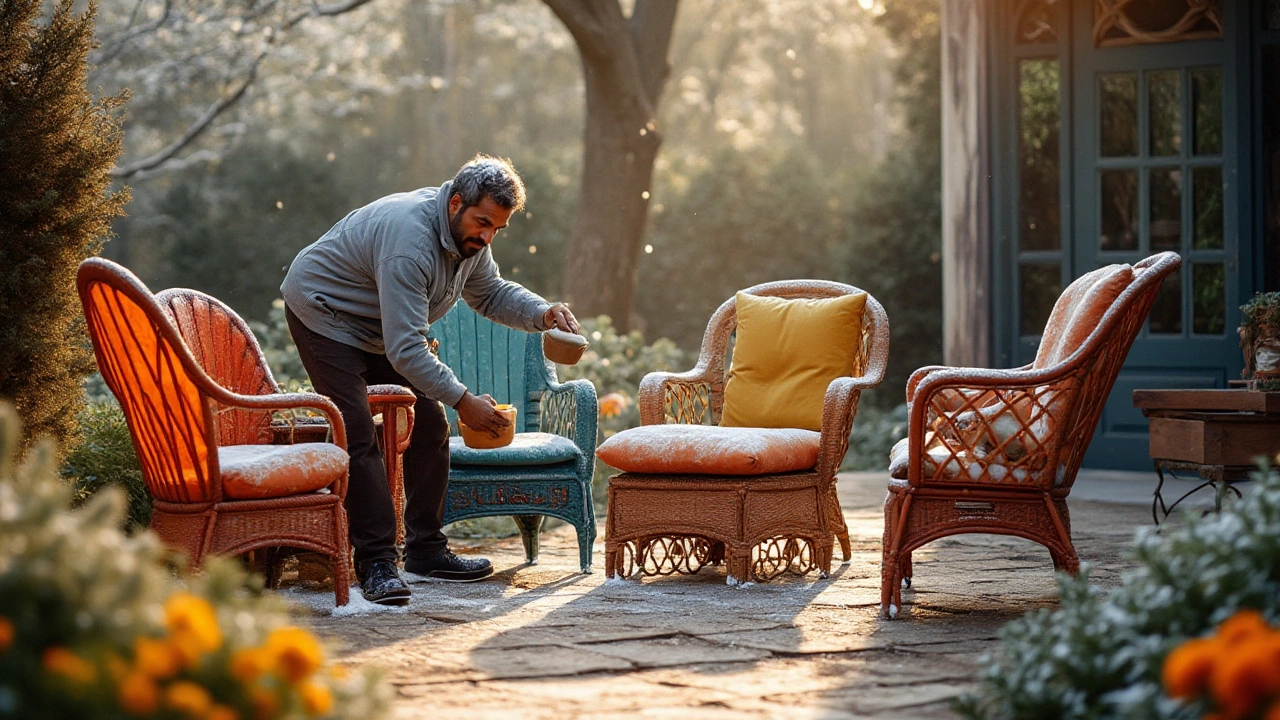Winter Care Tips for Your Sofa and Furniture
Winter can be harsh on furniture. Cold air, low humidity, and occasional spills make sofas, coffee tables, and rugs suffer faster. The good news? A few easy habits can stop damage before it starts. Below are the most useful steps you can take right now to protect your home’s pieces during the chilly months.
Shield Your Sofa from the Cold and Moisture
First thing to do is move your sofa away from direct drafts. A window that’s constantly open or a badly sealed door lets cold air hit the fabric and wood frame, causing cracks and fabric stiffening. If you can’t change the layout, add a thick throw blanket. It acts as a barrier and looks cozy at the same time.
Next, check the humidity level. Dry indoor air in winter can dry out leather and fabric, leading to cracks. Aim for 40‑50% humidity; a small humidifier in the living room does the trick. If you notice your sofa’s leather looking dry, wipe it with a damp cloth and then apply a leather conditioner once a month.
Spills are more likely when kids or pets are indoors all day. Keep a clean, soft cloth nearby and blot any liquid right away. Avoid rubbing—just press gently. For fabric sofas, a quick spot‑clean with a mild upholstery cleaner stops stains from setting.
Take Care of Wooden Coffee Tables and Other Hard Surfaces
Wood loves stable temperature. Sudden swings from a warm heater to a cold window can cause the wood to expand and shrink, making joints loosen. Keep coffee tables away from direct heat sources like radiators, but also avoid placing them right next to cold windows.
Apply a protective finish before winter arrives. A light coat of furniture wax or oil seals the wood and adds a moisture barrier. Reapply every few months if you notice the surface looking dull.
Watch for water rings from drinks. Use coasters and wipe any spills immediately. If a ring appears, a mixture of equal parts olive oil and vinegar rubbed gently can lift it without harming the finish.
Smart Storage and General Tips for the Whole Home
If you need to store furniture during winter, choose a dry, well‑ventilated space. Avoid basements that flood or attics that get too hot. Wrap each piece in breathable furniture covers—plastic can trap moisture and cause mold.
Check your home’s heating system for drafts. Seal gaps around doors and windows with weatherstripping; this not only saves energy but also reduces the cold wind that can dry out upholstery.
Finally, do a quick inspection each week. Look for cracks in wooden legs, tighten any loose screws, and fluff cushions to keep the fill even. A little weekly attention saves you from costly repairs later.
Winter doesn’t have to be a nightmare for your furniture. With these straightforward steps—move, cover, condition, and check—you’ll keep sofas, tables, and rugs looking fresh all season long. Enjoy a warm, comfortable home without worrying about wear and tear.
Winter Care for Garden Furniture: Tips and Tricks
Winter can pose challenges for garden furniture, but with proper care, your pieces can withstand the harsh weather. This article offers insights into how different materials react to cold and moisture, and provides practical steps to protect furniture such as storage solutions, cleaning methods, and protective treatments. Learn how to maintain your outdoor space so it remains inviting and functional, even during winter.





